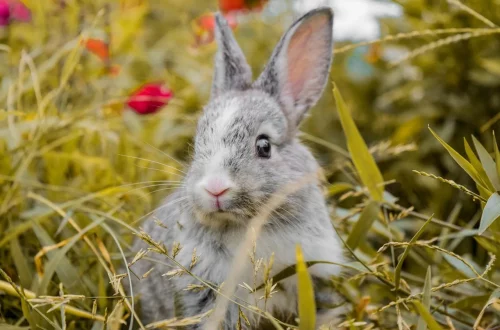
What Size Tank is Best for Your Betta Fish?
Fishkeeping is a rewarding hobby that attracts many enthusiasts around the world, particularly those who are drawn to the vibrant colors and unique personalities of betta fish. These stunning aquatic pets, with their flowing fins and lively behaviors, require special attention to ensure their well-being. One of the most critical aspects of caring for a betta fish is the size of the tank in which they live. While many believe that a small bowl suffices, understanding the specific needs of bettas can significantly influence their health and quality of life.
Choosing the right tank size not only impacts the water quality and environment but also affects the betta’s behavior and overall happiness. Bettas are known for their territorial nature and can become stressed in cramped spaces. By providing an adequately sized tank, you can create a more stable ecosystem, allowing your betta to thrive. This aspect is often overlooked by beginner fishkeepers, leading to common issues such as fin rot, stress, and even early mortality. Therefore, it is essential to consider various factors, including water parameters, tank mates, and the betta’s natural habitat, when deciding on the appropriate tank size.
In this article, we will explore the different tank sizes suitable for betta fish, the benefits associated with larger tanks, and how to create a comfortable environment for these beautiful creatures.
Understanding Betta Fish Natural Habitat
To choose the best tank size for your betta fish, it’s crucial to understand their natural habitat. Bettas, or Siamese fighting fish, originate from the shallow waters of Southeast Asia, particularly in rice paddies, swamps, and small streams. These environments are typically warm, with plenty of vegetation and hiding spots, which provide shelter and security.
In the wild, bettas have the opportunity to swim freely and explore their surroundings. They thrive in spaces that mimic their natural habitat, allowing them to exhibit their natural behaviors, such as flaring, swimming, and resting. This understanding highlights the importance of providing an adequate tank size that enables your betta to express these natural instincts.
A common misconception is that bettas can live comfortably in small bowls or tanks. While it’s true that they are resilient fish, confined spaces can lead to stress and health problems. A larger tank not only affords more swimming space but also helps maintain stable water conditions. In smaller tanks, water quality can deteriorate quickly due to waste accumulation, while larger tanks allow for better filtration and aeration.
Moreover, a tank that mimics a betta’s natural environment can enhance their coloration and overall demeanor. Plants, decorations, and hiding spots contribute to creating a stimulating environment. In contrast, a bare tank can lead to boredom and stress, negatively impacting your betta’s health.
The Benefits of a Larger Tank
Opting for a larger tank offers numerous advantages for both the fish and the hobbyist. One of the most significant benefits is improved water quality. Larger tanks have a greater volume of water, which dilutes toxins and waste produced by the fish. This dilution plays a crucial role in maintaining optimal water parameters, reducing the frequency of water changes required.
Additionally, larger tanks provide more stable temperatures. Bettas prefer warmer water, ideally between 76°F and 82°F. In smaller containers, temperature fluctuations can occur rapidly, leading to stress or illness. A larger tank allows for better heat distribution and stability, creating a more comfortable environment for your betta.
Another key advantage of larger tanks is the opportunity to introduce tank mates. While bettas are known for their aggressive behavior, especially towards other males, they can coexist with certain compatible species when provided with sufficient space. A larger tank can accommodate a community setup, offering your betta social interaction and enriching their environment. However, it is vital to research potential tank mates carefully to avoid conflicts and ensure a harmonious living situation.
Furthermore, larger tanks allow for more elaborate aquascaping. You can add plants, rocks, and decorations to create a visually appealing and stimulating environment. These elements not only enhance the aesthetic value of the tank but also provide hiding spots and territories for your betta, promoting a sense of security.
Recommended Tank Sizes for Bettas
When considering the ideal tank size for your betta fish, experts generally recommend a minimum of 5 gallons. While some may argue that bettas can survive in smaller tanks, a 5-gallon tank offers significant benefits, as discussed earlier.
A 5-gallon tank provides enough space for your betta to swim comfortably and explore. It also allows for more stable water conditions, reducing the risk of stress and disease. If you are an enthusiast and want to create a more dynamic environment, consider going even larger. Tanks ranging from 10 to 20 gallons can offer even more advantages, including enhanced water quality and the possibility of adding tank mates.
If you are limited on space or budget, a 3-gallon tank can be a suitable alternative, provided you are diligent about water changes and monitoring the fish’s health. However, it’s essential to remember that smaller tanks require more frequent maintenance and may not provide the same level of stability as larger tanks.
In addition to size, the shape of the tank can also be a consideration. Long, rectangular tanks provide more swimming space than tall, narrow tanks. Bettas are horizontal swimmers, and having a tank that accommodates this behavior is vital for their well-being.
Setting Up the Perfect Betta Environment
Creating the ideal environment for your betta fish involves more than just selecting the right tank size. The setup process is crucial in ensuring your pet thrives in its new home. Begin by selecting a tank that is equipped with a reliable filtration system. A quality filter will help maintain water clarity and chemical balance, making it easier for you to keep the tank clean.
Next, consider adding live or silk plants to the tank. Live plants not only enhance the beauty of the aquarium but also provide essential oxygen and help filter the water. Bettas enjoy having places to hide and explore, so incorporating plants and decorations is vital for creating a stimulating environment. However, avoid sharp edges that could damage your betta’s delicate fins.
Water quality is another critical factor. Regularly test the water parameters, including pH, ammonia, nitrite, and nitrate levels. Bettas prefer a pH range between 6.5 and 7.5. Make sure to perform partial water changes regularly to keep the environment healthy.
Lastly, maintain a stable temperature in the tank. Use a reliable heater to keep the water within the ideal range for bettas. Sudden temperature changes can stress your fish, leading to health complications.
In conclusion, providing the right tank size and environment for your betta fish is essential for their health and happiness. By understanding their natural habitat, the benefits of larger tanks, and the importance of a well-maintained setup, you can create a thriving home for your aquatic companion. Remember, a little effort in providing the right conditions goes a long way in ensuring a long and happy life for your betta fish.
**Disclaimer: This article is not intended as medical advice. For any health concerns regarding your fish, please consult a qualified veterinarian.**




